Chess class#1: Explanation of the Sicilian Dragon plus my Memorization Technique
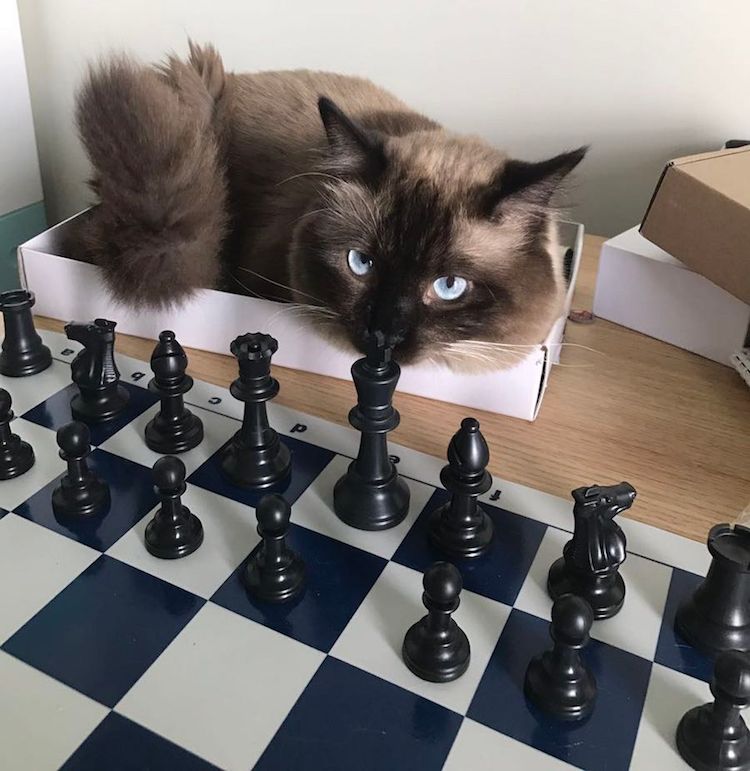
There are frequent debates about when a chess student should start memorizing specific openings. Some people say that it's best to focus on strategy and tactics until a more advanced level. Some say it can't hurt and helps learn strategies earlier. Most people would rather watch TV.
My opinion is that learning openings is fun and helpful anytime if you like chess, and you actually learn about the opening rather than just memorizing it. However, you do need memorization. There are hundreds of studied openings.
I haven't found a good mnemonic system online for chess openings, so I made one up, kind of like my girlfriend in middle school.
The goal of this post is for us to learn about a chess opening's ideas and strategy as well as a handy mnemonic device to memorize at least the first few moves. Not enough to start entering tournaments, but hopefully speed up our progress to becoming better players.
We're going to start with an aggressive and somewhat controversial opening that definitely has the coolest name of all openings - The Sicilian Dragon.
History of the Sicilian Defense
I'll pull a few short quotes from Wikipedia to provide a brief history of the opening.
"The Sicilian is the most popular and best-scoring response to White's first move 1.e4. 1.d4 is a statistically more successful opening for White due to the high success rate of the Sicilian defence against 1.e4.[1] New In Chess stated in its 2000 Yearbook that of the games in its database, White scored 56.1% in 296,200 games beginning 1.d4, but 54.1% in 349,855 games beginning 1.e4, mainly due to the Sicilian, which held White to a 52.3% score in 145,996 games.[2]
17% of all games between grandmasters, and 25% of the games in the Chess Informant database, begin with the Sicilian.[3] Almost one quarter of all games use the Sicilian Defence.[4]
The earliest record of the opening is the late 16th century by Italian chess players Giulio Polerio and Gioachino Greco[5][6]."
The Sicilian was seen as overly defensive and weak until the 1950's, when players like Isaac Boleslavsky, Alexander Kotov, and Miguel Najdorf played it. With Bobby Fischer and Garry Kasparov, the Sicillian Defense became recognised as the defense that gave most winning chances against 1.e4.
History of the Sicilian: Dragon Variation
"The modern form of the Dragon was originated by German master Louis Paulsen around 1880.[7] It was played frequently by Henry Bird that decade, then received general acceptance around 1900 when played by Harry Nelson Pillsbury and other masters.
The name "Dragon" was first coined by Russian chess master and amateur astronomer Fyodor Dus-Chotimirsky around 1900, who noted the resemblance of Black's kingside pawn structure to the constellation Draco.[8]"
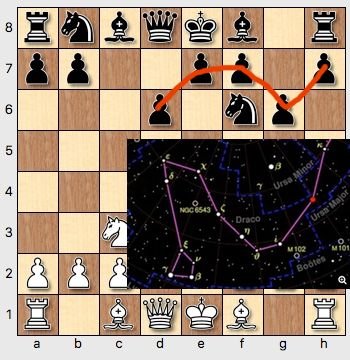
Ideas behind the Sicilian Defense
White says: "With 1.e4 I will try to control the center."
Black says: "I will also try to control center, but unlike 1 ...e5, I will play 1 ....c5 and make an asymmetrical claim to the center.
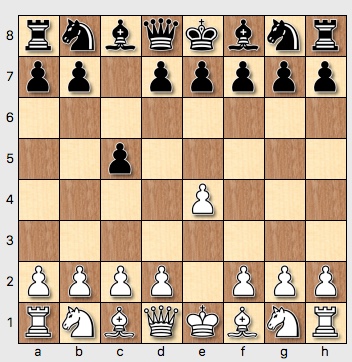
Playing the c pawn by black is not as good for development as is 1.e4 for white because it doesn't prepare to bring out a minor piece, however black's c pawn is frequently traded for white's d pawn, and therefore can get some center action and more importantly opens the c file for black's queen or rook.
It is common for white to maintain control of the kingside, while black can have the advantage on the queen side.
Ideas behind the The Dragon Variation
The dragon variation is the most aggressive, sharpest way to play the Sicilian. That means the game can change very quickly. It prepares attacks for white on the kingside, with a pawn push, while white's queenside castle puts the white king dangerously on the semi open c file.
After the opening move, white develops the knight to f3 and black moves forward a pawn to d6. White has taken advantage of the opening to develop faster, getting a minor piece out, and black has put out a pawn on the queenside which may help with attacks later on that side.
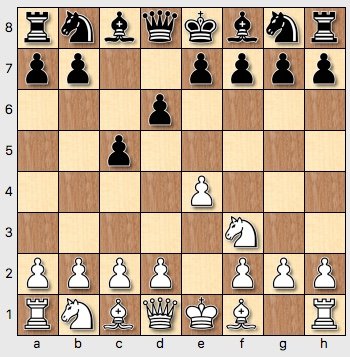
Then white moves the d pawn to d4, to trade it off and further develop the knight. Black takes the pawn, which gives it that semi open c file that will be valuable later on. White takes back with the knight.
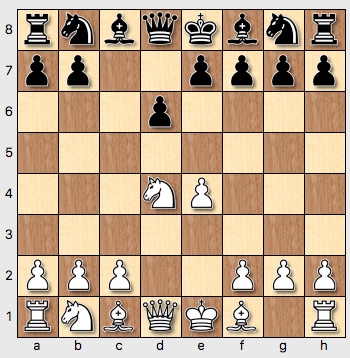
Next black gets the kingside knight out and White gets the queen side knight out, both preparing to castle. The last move that we'll look at is black putting the g-pawn out to g6. That opens up g7 to put the black bishop on. Fianchetto'ing the bishop clears the space for black to castle the king and is a good space to attack white's queenside.
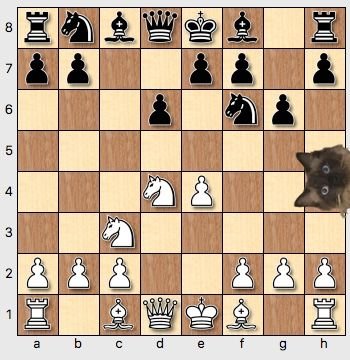
So that's the basic set up. As the game goes forward black attacks white's queenside and white attacks black's kingside. Both sides have chances. Of all openings, this is one of the most dangerous for both sides; you can suddenly find yourself in a tough position if you're not careful.
Memorization
My system for memorizing the first few moves of an opening is simple. It's creating a story. Each of the spaces on the board has a person's name associated with it. White side is male, black side is female. For white rank 3 is a one syllable name, rank 4 two, and rank 5 three. For black rank 6 is one syllable, rank 5 is two, rank 4 is three. Each name starts with the letter of the file it is on.
When a knight moves, the story will use "night" as a time of day or mention a horse. A bishop is similar, and when a minor piece moves to a certain file, that files letter is used in an adjective, for example a "cold night", means the knight moves to the c-file.
It's not a perfect system, but I think it works pretty well and it's better than nothing :-)
Here are the moves for the Dragon:
1.e4 c5
2.Nf3 d6
3.d4 cxd4
4.Nxd4 Nf6
5.Nc3 g6
The story is:
Eddie and Carol had a fun night with Del. Daniel got picked up by Carol on Daniel's horse. It was a Friday night and a cold night, with large gusts of wind.
Breaking it down:
- e4 is Eddie, c5 is Carol - two syllable names
- Nf3 is "fun night", d6 is Del, a one syllable name
- d4 is Daniel, "picked up by Carol" means that c5 takes d4.
- "on Daniel's horse" means that the knight takes Daniel's space on d4. Nf6 is "Friday night".
- Nc3 is "cold night" and g6 is "gusts" of wind.
So that's it, hope you enjoyed! It was fun doing this one so I'll definitely be doing another.
Sources
1.Rowson, Jonathan (2005). Chess for Zebras: Thinking Differently About Black and White. Gambit Publications. p. 243. ISBN 1-901983-85-4.
2.Sosonko, Gennady; Paul van der Sterren (2000). New In Chess Yearbook 55. Interchess BV. p. 227. ISBN 90-5691-069-8.
3.Watson, John (October 2006). Mastering the Chess Openings: Unlocking the Mysteries of the Modern Chess Openings, Volume 1. Gambit Publications. p. 175. ISBN 1-904600-60-3.
4.John Emms, Starting Out: The Sicilian, 2nd ed., p. 5
5.De Firmian, Nick (2008). Modern Chess Openings: MCO-15. Random House Puzzles & Games. p. 244. ISBN 0-8129-3084-3.
6.Ristoja, Thomas; Aulikki Ristoja (1995). Perusteet. Shakki (in Finnish). WSOY. p. 63. ISBN 951-0-20505-2.
7.Hooper, David; Whyld, Kenneth (1987). The Oxford Companion to Chess. Oxford University Press. p. 95. ISBN 0-19-281986-0.
8.Martin, Andrew (2005). "Intro". Starting Out: The Sicilian Dragon. Everyman Chess. p. 5. ISBN 1-85744-398-5.

So that means I need not only memorize the moves but in addition many names? :-)
Very nice article. Unfortunately nowadays openings comprise so many variations and extremely long move orders that it has become a full time job being a grandmaster. These days chess is science ... early masters won because of intuition, positional understanding and great calculations which is still necessary nowadays, but not enough anymore ... (professional) chess has become really hard work.
Definitely true. I recently did an article on Paul Morphy and it's interesting to think about chess in those days. I can see myself getting tired of studying, but for now I'm having fun learning the theory. There are so many good videos of games and theory; for good or bad it is an interesting time for chess. Thanks,
Solid post but it needs some editing! A chess game can never start e4, d4. I take it you mean e4 d5?!?
ah yes, good catch. d5. thanks,
haha you jedi mind tricked me. Which spot are you looking at. There's a mention of d4 right after e4, in the history section, but that's comparing white's move d4 to e4, saying that d4 for white is more successful because the Sicilian wins a lot against e4. Is there another spot I'm missing?
I thought you were mentioning an open not comparing opens. I guess that's my bad!
Yup! Definitely read that wrong the first time my bad!
I personally like to play the French Defense against a e4 opening!
Just noticed this, I'm about to do another one, I'll do the French! Any variations you'd recommend to focus on?
My favorite is the Winawer Variation.
Hey, I posted the 2nd part this time on the French, would like to have your opinion on whether I screwed up anything :-)
https://steemit.com/chess/@cryptastic/chess-class-2-explanation-of-french-defense-variations-and-memorization-technique
No worries! just happy you read the post :-)
Best Chess cover photo ever.
Welcome to Steemit :)
I follow u, follow me back if u want lot of fun and amazing picture every day.
thanks, sure
This post was a nice diversion. Reminds me of the chess puzzles found in newspapers.
glad you liked it, thanks,
Great post! I do not see the dragon in the pieces, but it was written very nicely.
Thanks! I think I could have explained where the dragon is better. The black pawn structure resembles the constellation draco shown below:

Hmm, I am obviously not an artist, because I can't see it. But thanks for clarifying!
I have not done my job until you see it ;-)
Haha. Thank you. I do see it now, I just tried to fit the black's entire piece set into it.